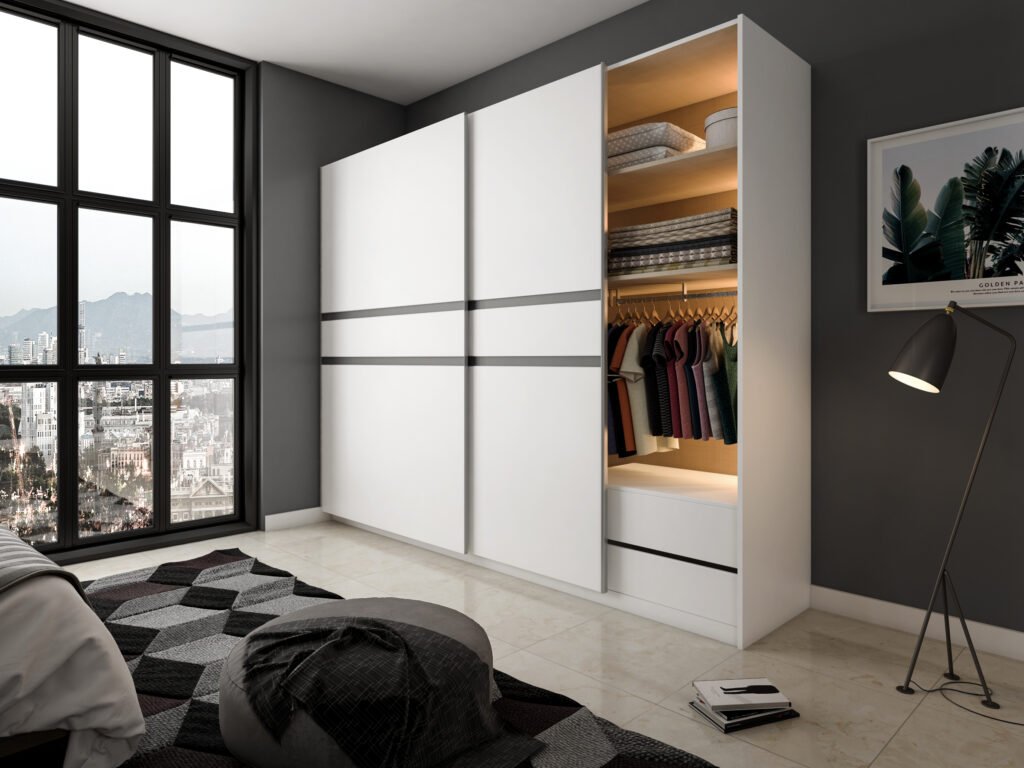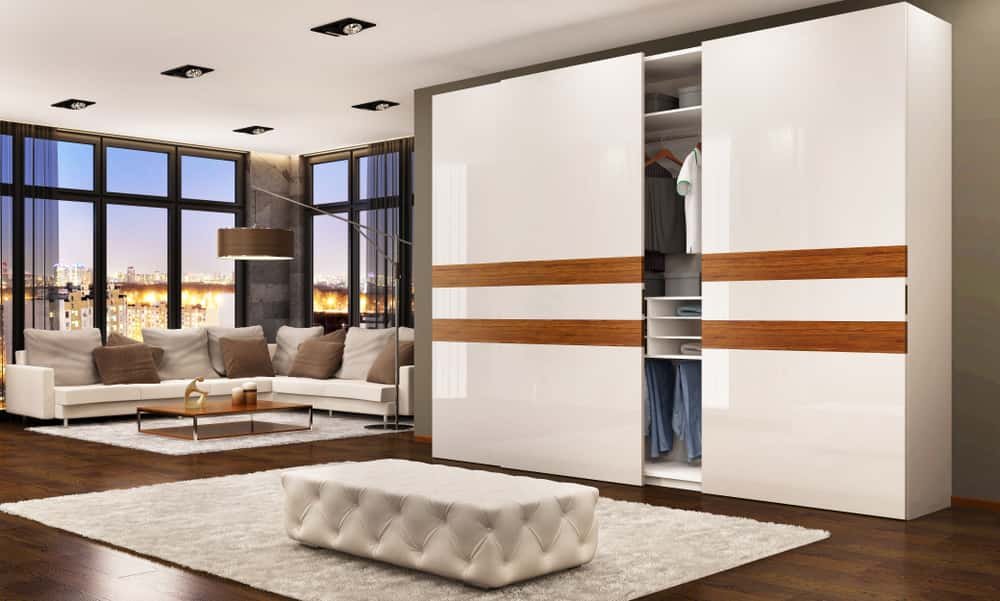The Pros and Cons of Sliding Door Modular Wardrobes
Sliding door modular wardrobes have become increasingly popular in modern homes, especially in spaces where efficient use of space is essential. These wardrobes provide a sleek, stylish, and practical solution for storing clothes, accessories, and other personal items.
However, like any home furnishing option, sliding door modular wardrobes come with their own set of advantages and disadvantages. In this blog, we will explore both the pros and cons of sliding door modular wardrobes to help you make an informed decision for your home.

What is a Sliding Door Modular Wardrobe?
A sliding door modular wardrobe is a type of wardrobe where doors slide horizontally rather than opening outward. These doors move on tracks and are made from materials such as wood, glass, or mirrors. Modular wardrobes consist of various modules like shelves, drawers, hanging spaces, and compartments that can be customized to fit your specific storage needs. This design not only saves space but also provides a modern, clean look for bedrooms and other living spaces.

Pros of Sliding Door Modular Wardrobes
1. Space-Saving Design
One of the biggest advantages of sliding door wardrobes is their ability to save space. Since these wardrobes don’t require additional room for door swing, they are ideal for small or cramped spaces like apartments, studio flats, or rooms with limited floor area. The sliding mechanism ensures that you can access your wardrobe without worrying about obstructing the room’s layout.
2. Aesthetic Appeal
Sliding door wardrobes offer a sleek, modern look that enhances the overall aesthetics of any room. They are available in various designs, materials, and finishes—such as matte, glossy, or mirrored surfaces—which can complement different interior styles. Whether you prefer a minimalist look or a more luxurious feel, sliding doors can provide a sophisticated touch to your living space.
3. Customizable Storage Options
Sliding door wardrobes are modular, meaning they can be customized to meet your specific storage needs. You can choose from a variety of modules, such as shelves, drawers, hanging rods, and compartments for accessories. This flexibility allows you to maximize your storage space while maintaining a streamlined look.
4. Durability and Low Maintenance
Sliding door wardrobes are typically built with durable materials like wood, metal, or high-quality MDF (Medium-Density Fiberboard). These materials ensure that the wardrobe lasts for years with minimal maintenance. The sliding mechanism itself is designed to withstand heavy use, ensuring a smooth operation even with frequent use.
5. Multifunctionality
Many sliding door wardrobes come with additional features, such as integrated mirrors, lighting, or compartments for specific items like shoes or accessories. This multifunctionality enhances both convenience and organization, making sliding wardrobes a versatile choice for modern homes.
Cons of Sliding Door Modular Wardrobes

1. Higher Cost
One drawback of sliding door modular wardrobes is that they tend to be more expensive compared to traditional hinged-door wardrobes. The sliding mechanism, additional customization, and the use of high-quality materials contribute to the higher price point. For those on a tight budget, a simple design may be more cost-effective.
2. Maintenance Issues
While durable, sliding doors may require occasional maintenance. The tracks can accumulate dust and dirt over time, which may affect their smooth operation. In some cases, lubricating the tracks or realigning the doors might be necessary to prevent them from getting stuck or jamming.
3. Limited Design Options for Sliding Mechanism
Although there are various designs available, sliding door wardrobes may have fewer style options compared to hinged-door wardrobes. This could be a limitation for individuals looking for highly customizable or specific aesthetic choices.
4. Accessibility Concerns
Since sliding doors require space alongside the wardrobe for movement, accessibility might be slightly reduced compared to hinged doors. Depending on how the wardrobe is positioned in the room, accessing items stored at the back might require pulling the doors completely open, which could be inconvenient in some layouts.
5. Maintenance of Mirrored or Glass Surfaces
Sliding doors with mirrored or glass surfaces require additional care. These materials are prone to smudges, fingerprints, and scratches. Cleaning them regularly can take some effort, and over time, mirrors or glass surfaces may lose their clarity or shine if not maintained properly.
How to Choose the Right Sliding Door Modular Wardrobe
When considering a sliding door modular wardrobe, it’s essential to weigh both the pros and cons based on your lifestyle and needs. Here are some tips to help you choose the right wardrobe:
- Space Consideration: Ensure that you have enough space for the sliding doors to move smoothly. Measure the room size and wall length accurately.
- Material: Opt for durable materials like wood, metal, or laminated finishes that suit your needs for longevity and ease of maintenance.
- Design: Choose a design that complements your home décor. Whether it’s modern, traditional, or minimalist, make sure it aligns with your overall aesthetic.
- Budget: Set a budget and explore different modular wardrobe options within that range to find the best value for your investment.
Sliding door modular wardrobes offer a range of benefits, including space-saving designs, aesthetic appeal, and flexibility in customization. While they may be pricier and require occasional maintenance, they provide a practical solution for compact living spaces. By considering the pros and cons, you can decide if a sliding door wardrobe is the right fit for your home in terms of functionality, style, and convenience.



